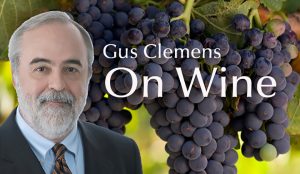Wine professionals split aromas and flavors into three different categories: primary, secondary, tertiary. What do those terms mean?
Primary aromas and flavors come from the grape and the vineyard. They usually are straightforward—yellow apple for chardonnay, cherry and raspberry for pinot noir, black cherry and black currant for cabernet sauvignon. Typically, primary aromas and flavors track with each other. Smell yellow apple, taste yellow apple. Smell cherry, taste cherry.
Human influence evokes secondary aromas and flavors. Selection of yeasts for fermentation, oak aging, malolactic fermentation, aging on the lees (dead yeast cells left over from alcoholic fermentation) are examples of human intervention.
Wines aged in oak take on secondary aromas and flavors of vanilla, clove, baking spice. Depending on the toast of the barrel, caramel, cocoa, crème brûlée. French oak is different, and more expensive, than American. New oak has much more influence than used barrels. Size of the barrel matters—smaller the barrel, more the influence.
Malolactic fermentation evokes butter and cream, especially notable with chardonnay. Time on the lees evokes bread dough notes, especially in Champagne.
Tertiary aromas and flavors come from aging, almost always in the bottle. Tertiary aromas and flavors typically replace some primary aromas and flavors. Berry notes in young reds evolve into dried fruits and prunes, also notes of tobacco, forest floor, leather. White wines take on flavors of honey, smoke, nuttiness.
Some wines must have bottle age to succeed—Barolo Riserva, by law, must age five years in bottle before release. Quality Barolo Riserva wines age 10 years or more in bottle before release.
There are a lot of moving parts here, which means each bottle of wine is a work in progress until you drink it. Most wines today are made to be drunk now, thus emphasizing primary aromas and flavors. Many will decline, not improve, with age. Expect age-worthy wines to have complexity, multiple layers of primary, secondary, and tertiary influences. And to cost more.
Tasting notes:
• Bonterra Dry Muscat, Lake County 2017: Bone-dry expression of muscat grape. Delicious fruit, easy drinker, layers of flavor. $16-18 Link to my review
• Marqués de Cáceres Reserva Rioja DOCA 2014: savory example of a tempranillo Rioja blend and an outstanding price-for-value play by a pioneer of Rioja wine imported into U.S. $18-24 Link to my review
• Hamacher Pinot Noir Willamette Valley 2014: Excellent, delicious fruit becomes better the longer it swirls in your big glass. $39-50 Link to my review
Last round: You don’t like him/her? Drink more wine and see what happens.

